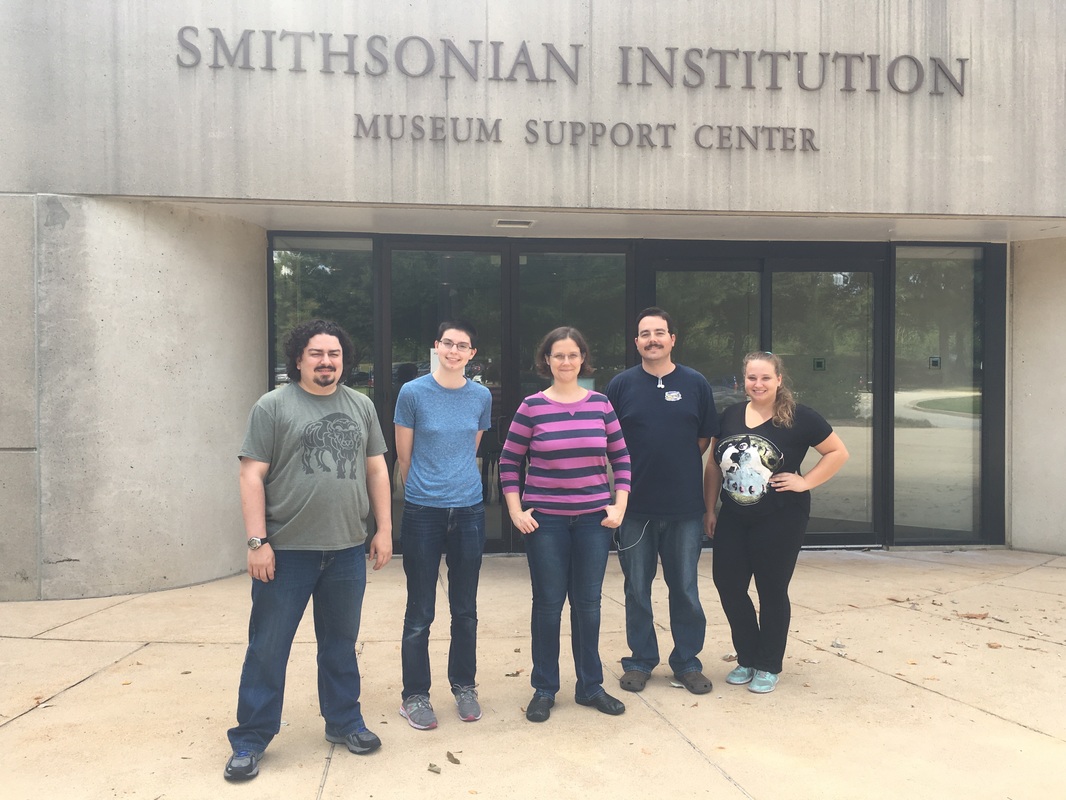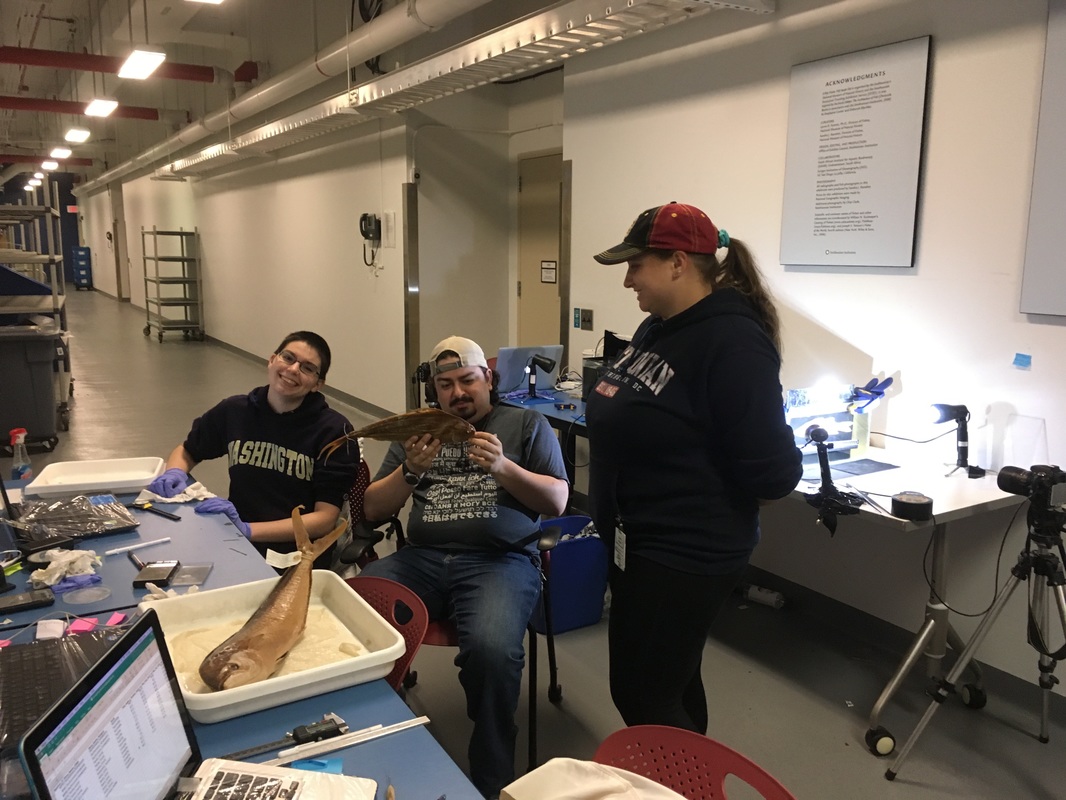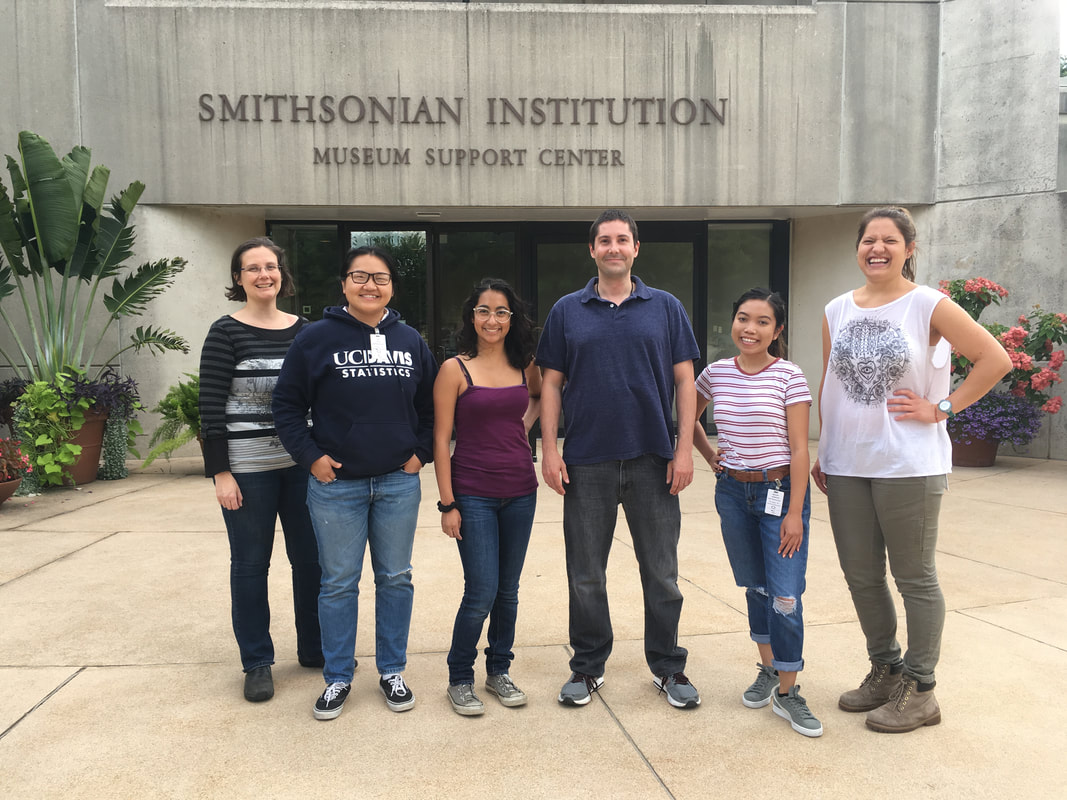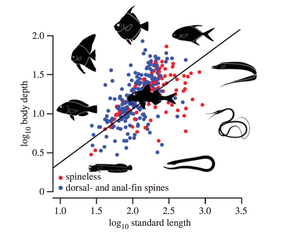Environmental and ecological drivers of body form diversification
NSF DEB-1556953
This project aimed to disentangle the ecological and environmental drivers of teleost body shape. It will bridge the gap between microevolutionary studies that demonstrate how body shape changes are induced by different ecologies intra-specifically, biomechanical models that express how certain shapes optimize specific performance traits and the remarkable diversity of forms observed across the teleost tree of life. Although ichthyological textbooks are richly illustrated with claims of adaptive morphological convergence, the nature of the relationship between fish shape and ecological (habitat-use, trophic niche), biological (modes of locomotion, feeding, defence) and environmental variables (salinity, water temperature, oxygen content) remain largely unknown at the macroevolutionary scale.
Over seven months at the Smithsonian museum we collected ecomorphological data on 6000+ species, including regions vital for swimming and prey-capture performance from museum specimens using 13 linear measurements on width, depth and fin spine length as well as lateral photos. Combined with databases of biological, environmental and ecological and functional traits assembled from the scientific literature this teleost morphospace will enable me to quantitatively identify ecomorphs. It has involved a massive team of people from Clemson University and UC Davis, including 42 undergraduate researchers, 5 graduate students & lab techs and 2 postdocs. None of this would have been possible without the hard work of all these people and Sarah Friedman, Katherine Corn, Chris Martinez and Olivier Larouche in particular and of course my Co-PI Peter Wainwright!
Over seven months at the Smithsonian museum we collected ecomorphological data on 6000+ species, including regions vital for swimming and prey-capture performance from museum specimens using 13 linear measurements on width, depth and fin spine length as well as lateral photos. Combined with databases of biological, environmental and ecological and functional traits assembled from the scientific literature this teleost morphospace will enable me to quantitatively identify ecomorphs. It has involved a massive team of people from Clemson University and UC Davis, including 42 undergraduate researchers, 5 graduate students & lab techs and 2 postdocs. None of this would have been possible without the hard work of all these people and Sarah Friedman, Katherine Corn, Chris Martinez and Olivier Larouche in particular and of course my Co-PI Peter Wainwright!
|
Teleostean body shape morphospace with size removed by calculating Log-Shape ratios (LSR) and phylogeny taken into account during PCA. The primary axis is body width contrasting laterally compressed with dorsoventrally flatten fishes and the secondary axis is elongation. Each family is represented in a different colour to give an idea of phylogenetic relationships. Taken from Figure 1 Price et al. 2019 ICB.
|
Publications
- Price et al. 2019 Building a body shape morphospace of teleostean fishes. Integrative and Comparative Biology 59(3), 716-730.
- Price et al. 2020 A CURE for a major challenge in phenomics: a practical guide to implementing a quantitative specimen-based undergraduate research experience. Integrative Organismal Biology 2(1)
- Larouche et al. 2020 Reef associated fishes have more manoeuvrable body shapes at a macroevolutionary scale. Coral Reefs 39(5), 1427-1439
- Friedman et al. 2020 Body shape diversification along the benthic-pelagic axis in marine fishes. Proceedings of the Royal Society of London, B. 287(1931), p.20201053
- Larouche et al. 2020 Do key innovations unlock diversification? A case-study on the morphological and ecological impact of pharyngognathy in acanthomorph fishes. Current Zoology 66(5), pp.575-588
- Martinez et al. 2021 The Deep Sea is a Hot Spot of Fish Body Shape Evolution. Ecology Letters 24(9), 1788-1799
- Friedman et al. 2021 The effect of locomotion mode on body shape evolution in teleost fishes. Integrative Organismal Biology 3(1), obab016
- Friedman et al. 2021 Divergent processes drive parallel evolution in marine and freshwater fishes. Systematic Biology 71(6), 1319-1330
- Alencar et al. 2022 Size as a complex trait and the scaling relationships of its components across teleost fishes. Evolutionary Ecology 36, 471–487.
- Corn et al. 2022 The rise of biting during the Cenozoic fueled reef fish body shape diversification. Proceedings of the National Academy of Science 119(31), p.e2119828119
- Price et al. 2022 FishShapes v1: functionally relevant measurements of teleost shape and size on three dimensions. Ecology 103(12), e3829
- Burns et al. 2024 High latitude ocean habitats are a crucible of fish body shape diversification. Evolution Letters 8(5), 669-679
- Hodge et al. 2025 Unraveling the effects of ecology and evolutionary history in the phenotypic convergence of fishes. Systematic Biology online early
|
Price, S. A., Friedman, S. T. & Wainwright, P. C. How predation shaped fish: the impact of fin spines on body form evolution across teleosts. Proceedings of the Royal Society of London, B. online early DOI: 10.1098/rspb.2015.1428.
|
Did predation influence the evolution of fish body shape?
It is well known that predators can induce morphological changes in some fish: individuals exposed to predation cues increase body depth and the length of their fin spines. These structures may evolve synergistically, as together, these traits will further enlarge the body dimensions of the fish that gape-limited predators must overcome. I would therefore expect that the orientation of the spines will predict which body dimension increases in the presence of predators. However, only species with dorsal and anal fin spines have been used in common-garden experiments. Using phylogenetic comparative methods, I tested this prediction on the macroevolutionary scale across 347 teleost families, which display considerable variation in fin spines, body depth and width. Consistent with the predictions, I found that fin spines on the vertical plane (dorsal and anal fins) are associated with a deeper-bodied optimum. Lineages with spines on the horizontal plane (pectoral fins) are associated with a wider-bodied optimum. While, optimal body dimensions across lineages without spines paralleling the body dimension match the allometric expectation. Additionally, lineages with longer spines have deeper and wider body dimensions. This evolutionary relationship between fin spines and body dimensions across teleosts reveals functional synergy between these two traits and a potential macroevolutionary signature of predation on the evolutionary dynamics of body shape. |





